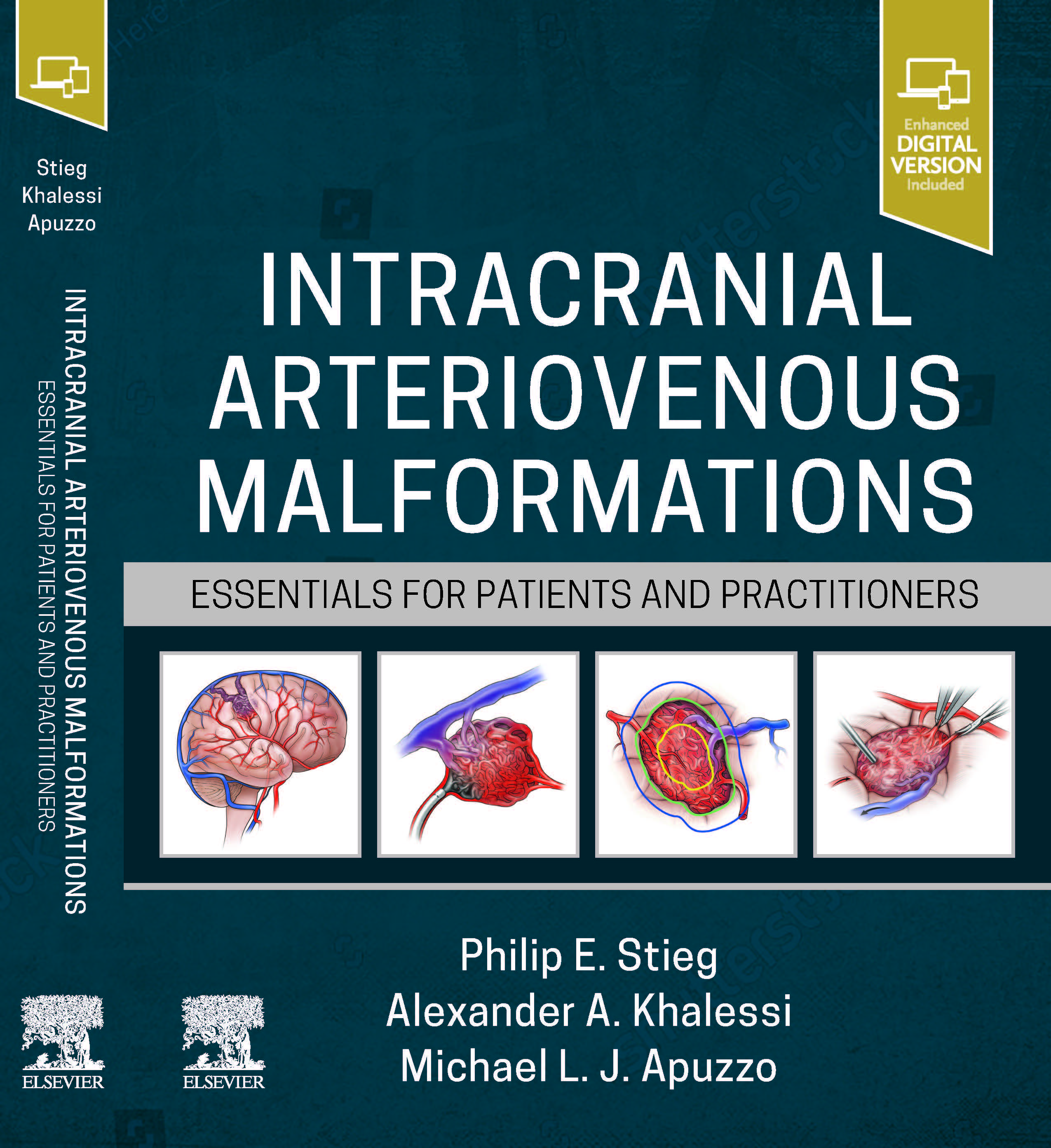Addressing both the patient’s perspective and the neurosurgeon’s concerns, Intracranial Arteriovenous Malformations: Essentials for Patients and Practitioners, edited by Drs. Philip E. Stieg, Alexander A. Khalessi, and Michael L. J. Apuzzo, starts with an up-to-date approach to the matter of doctor-patient communication and moves on to the highly technical details of iAVM treatment options. The first section covers communication with patients (who may well want to read it themselves); the second section is directed to neurosurgeons and other specialists caring for patients with intracranial AVMs, including those in emergency medicine, obstetrics, anesthesia, and intensive care. It offers a highly sophisticated but readable approach to the contemporary treatment of these challenging lesions.
This new book was published on September 18, 2023, and is available for order on the Elsevier site.
From the Foreword by Michael L.J. Apuzzo, MD
Modern neurosurgery is barely a century old (Walter Dandy performed the first intracranial therapeutic vascular procedure in 19371), but the composite of knowledge and technical resources considered “contemporary neurosurgery” emerged over just the past generation. We now possess detailed structural and functional imaging that provide remarkably accurate views into the brain and allow patient-level specificity in characterizing its unique pathologies. Refinement of microsurgical, radiosurgical, and endovascular techniques has followed suit, vastly reducing the level of intrusion required for definitive treatment. Sophisticated insights related to biologic signatures, molecular genetics, and flow patterns are the order of the day.
These developments represent a remarkable leap in human achievement over a relatively brief period, a leap
that allows application of multiple technical adjuvants and strategic approaches to intracranial arteriovenous malformations (iAVMs). We have collected an enormous body of knowledge on the classifications, natural history, and pathophysiology of this unique array of malformations. Despite this great progress, each case remains a Gordian Knot to unravel. There are so many variables to consider that the management and therapeutic options remain a challenge. There is frequently no easy solution—or at least not one that is without risk. There is rarely a sword like Alexander’s to help a neurosurgeon break through the knot—this book is that sword!


